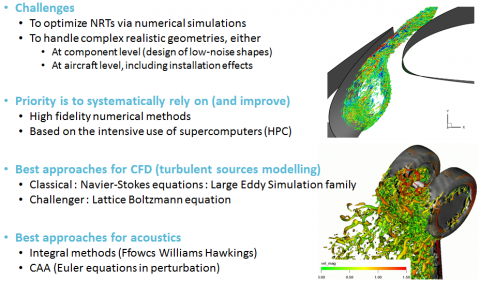In INVENTOR, one leading objective is to systematically rely on – and thus significantly improve – the high fidelity “HPC” methods which are assumed to be the only ones that might handle complex geometries in the near future, either at component level, e.g. for the design of modern low-noise shapes, or at more global level assuming complex interactions between the components.
HPC relies on the intensive use of supercomputers for the non-stationary treatment of Navier-Stokes equations (in so-called Large Eddy Simulations – LES) – a highly time, memory and CPU-consuming task requiring a high degree of expertise – in order to determine the turbulent flow field including the noise sources. Alternatively, some newer techniques based on Lattice-Boltzmann methods (LBM) will be used. Once noise sources are obtained, the far-field noise is computed thanks to other numerical techniques (Integral Ffowcs-Williams and Hawkings method, Boundary Elements Methods) and associated computational codes.

